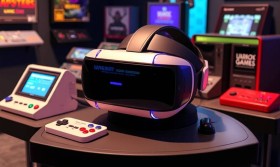Title: Pixels & Pulp: How Dragon Fruit Captivates Across the Roblox Metaverse
In the sprawling, user-generated cosmos of Roblox, trends are the currency of cool. From obbies to aesthetics, what captures the collective imagination of millions of players can shift in an instant. Yet, one particular trend has shown a fascinating persistence and versatility: the allure of the dragon fruit. This vibrant, pink-hued, spikey-exteriored fruit isn't just a nutritious snack in the real world; within Roblox, it has been reimagined, repurposed, and revered in strikingly different ways across various titles. Its appeal isn't monolithic; it morphs to fit the core gameplay loop, community values, and visual language of each game it inhabits, serving as a perfect case study for how a single asset can hold multifaceted value in a digital ecosystem.
Perhaps the most direct and powerful manifestation of the dragon fruit's appeal is in the monumental success story of Blox Fruits. Here, the dragon fruit is stripped of any mere cosmetic value and transformed into a core mechanic of power progression. It is a Devil Fruit, a direct homage to the One Piece anime, granting the consumer incredible, game-altering abilities at the cost of being unable to swim. The Dragon Fruit (or "Dragon," as it's known in-game) isn't just any fruit; it is consistently ranked among the most coveted and powerful Mythical-class fruits in the entire game.
Its appeal in Blox Fruits is multifaceted:
- Power Fantasy: Consuming it allows the player to transform into a majestic, fiery dragon, unleashing devastating breath attacks and aerial maneuvers. This taps directly into a primal power fantasy, offering a tangible and visually spectacular reward for effort.
- Rarity and Status: Its extremely low drop rate from bosses or its exorbitant price from the dealer makes it a symbol of status. Owning a Dragon Fruit signifies not just power, but often dedication, luck, or trading prowess. Players strive for it as a definitive end-game goal.
- Competitive Edge: In the PvP (Player vs. Player) heavy environment of Blox Fruits, having a top-tier fruit like Dragon is a significant meta advantage. Its appeal is thus deeply tied to gameplay utility and dominance over others.
The value is intrinsic, measured in damage output and win rates. The fruit's pink color and unique shape become a badge of honor, a visual cue that signals a formidable opponent or ally. Its appeal is raw, competitive, and deeply integrated into the player's journey to become the strongest.
In stark contrast, games like Adopt Me! and Royale High present the dragon fruit through a completely different lens. Here, its appeal is almost entirely social and aesthetic. You won't gain fire-breathing abilities from it; instead, you might wear it, hold it, or feed it to a virtual pet.
In Adopt Me!, the dragon fruit appeared primarily as a limited-time food item used to obtain specific neon pets, like the Neon Dragon. Its appeal was transactional and collectible. It was a means to a cute, desirable end. The fruit itself was a task item, a piece of a larger goal of collection and pet-raising. Its value was not in consumption for power, but in its function within the game's economy of care and customization.
Royale High, a game centered around fashion, roleplay, and fantasy aesthetics, leverages the dragon fruit's visual properties. It might appear as a charming accessory—a small clutch purse shaped like a dragon fruit, a hair clip, or a pattern on a sundress. Its appeal lies in its unique color palette (that perfect pastel pink with green accents) and its exotic, "tropical" vibe that fits certain aesthetics like "cottagecore" or "fruitcore." The spiky texture translates into a interesting visual detail for digital clothing. In this context, the dragon fruit's appeal is its ability to contribute to a player's unique identity and style. It is external, a part of an outfit rather than a part of the player's avatar's core being.
Beyond these two dominant models, the dragon fruit finds life in more niche, creative corners of Roblox. In various obstacle course (obby) games, it might appear as a decorative prop, adding a splash of color and a "juicy" theme to the environment. In roleplaying games like Bloxburg or Welcome to Bloxburg, it can be purchased as a food item from a supermarket and placed in a bowl as home decor, signifying a healthy, stylish, or luxurious lifestyle for a player's character. In these spaces, its appeal is atmospheric and narrative. It helps build a believable, detailed world. It’s a set piece, a small part of the story a player is telling about their virtual life.

The journey of the dragon fruit across the Roblox metaverse highlights a crucial aspect of the platform's culture: context is king. An asset's value is not inherent but is assigned by the community and the rules of the experience it exists within. The same visually distinct fruit can be:
- A weapon of mass destruction (Blox Fruits).
- A key to obtaining a cherished companion (Adopt Me!).
- A fashionable accessory (Royale High).
- A simple piece of home decor (Bloxburg).
This chameleon-like quality is what makes the dragon fruit such a compelling digital artifact. Its appeal isn't just about its bright pink color or cool name; it's about what players can do with it. In competitive games, it appeals to the drive for power. In social games, it appeals to the desire for identity and collection. In creative games, it appeals to the instinct for world-building. The dragon fruit, in its pixelated form, becomes a mirror, reflecting the diverse and often contradictory desires of the millions of players who make up the ever-evolving world of Roblox. It proves that even the simplest of concepts can bear unexpected and delicious fruit when planted in different digital soils.
Tags: #Roblox #DragonFruit #BloxFruits #AdoptMe #RoyaleHigh #GameAnalysis #VirtualEconomy #GamingCulture #Metaverse #PowerProgression #AestheticAppeal #RobloxCommunity


















